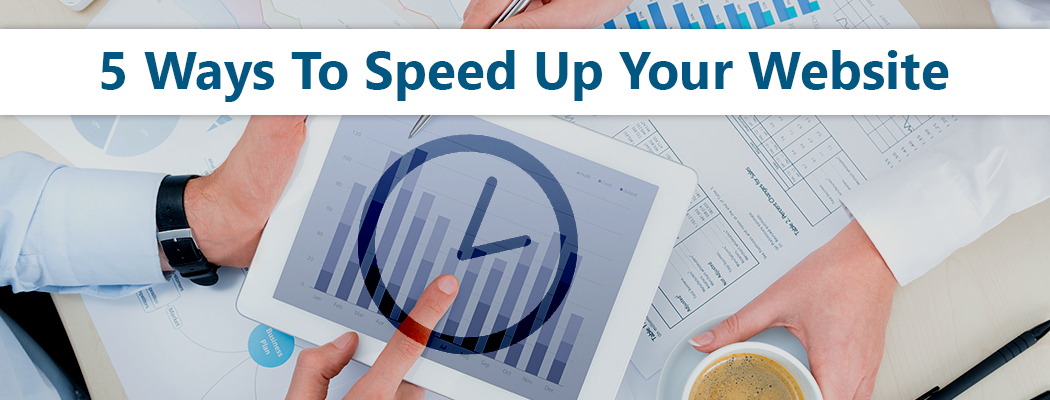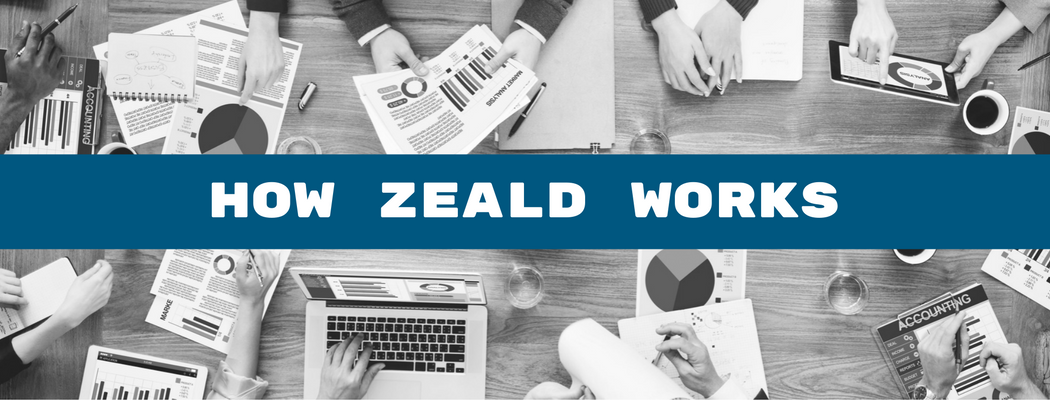5 Ways To Speed Up Your Website

You already know that having a beautiful looking website is important. You want to give potential customers a great first impression of your company right? Of course you do, but this should never come at the cost of having a slow website. With a slow website you run the risk of your user not even hanging around for the first page to load, let alone navigating through multiple pages to purchase something or make an enquiry. Research shows that page abandonment increases with every passing second. If your website takes more than 3 seconds to load, 40% of visitors will have already left (Kissmetrics).
Obviously the most important factor when it comes to website load times is the user’s internet connection. Unfortunately we can’t control this aspect, but there are a few things you can control on your website to make sure your website loads as fast as possible for everyone.
1. Responsive design
Designing a website for mobile first has multiple benefits, one of which is speed. We’ve talked before about the importance of having a website optimised for mobile. The simple fact of the matter is that the overwhelming majority of people are now using mobile devices to access the internet. This can cause issues with loading speeds, as WiFi internet is slower than a wired connection and 3g/4g data connections aren’t always the most stable. A website tailored for viewing on a desktop computer is only going to exacerbate speed issues. It’s for this reason that current website trends dictate a heavy focus on the mobile experience first and foremost.2. Optimise images
One of the most common reasons for websites to load slowly is the size of images on the page. Of course, images are a very important component and shouldn’t just be removed. They help to tell a story and break up large blocks of text. They are also a fantastic tool to display your products and services. The trick is to use them effectively so they look tidy and professional while also loading quickly. The best way to do this is to make sure that all your images are well optimised. There a number of things you can do to achieve this: you can crop them, resize them, use thumbnails, etc. While it is important to make sure your images are of a decent quality, huge images are going to load slowly. Find an appropriate balance between file size and image resolution.3. Reduce clicks
Each page on your website should have a specific goal that is able to be completed with as few clicks as possible. Don’t lead potential customers on a treasure hunt around your website to get what they want. Every time they click a link, more content is going to have to load, slowing the process down. There are exceptions of course, say if you want to link to an article on your blog with more information, or a high resolution image gallery. In general though, try to avoid this by keeping all the information on one page. If you are worried that there is too much information on the one page, break it up into easily understood sections with headlines to describe each. That way, those that need the information will be able to find it easily, but it won’t distract those who are just looking to complete a transaction as quickly as possible.4. Limit objects on your page
All the various image and text components you have on your page should be limited to absolutely what is necessary. For every object to download on your visitor's computer, a request has to be sent to the server, processed, and then sent back to the user. Too many objects on your page can increase the time it takes for the whole page to display. On the flip side, you don’t want just one big object with all your text and images in it either.That will force the visitor to stare at a blank screen while waiting for one large object to load. Those first crucial seconds of attention will have been wasted. That's why you still need to have separate blocks of information when you layout your page. That way the parts of your page which are smaller in size will load first (which is usually the text on your website) and your visitor will have something to be engaged with while waiting for the whole web page to load. Keep this in mind when deciding on content for your web page.5. Avoid auto-playing audio/video
I’m sure most of you are asking ‘Do you really have to keep saying this?’. The answer is yes. Zeald still get requests to add automatically playing music or video to websites, and we still have to explain why it just isn’t a good idea. Always give your website visitor the choice to load up a video or music file on your website. If your video loads automatically every time someone lands on your page, not only will it add to the load time of the page but it will also ruin the usability of your website. There is nothing more annoying than having to listen to the same music or video the 5th time I've landed on your page. Even YouTube gives users the choice to load up videos or music, even though the entire purpose of the site is to provide video entertainment.Want to know how well your website is performing? Get a FREE website audit from the experts at Zeald.



